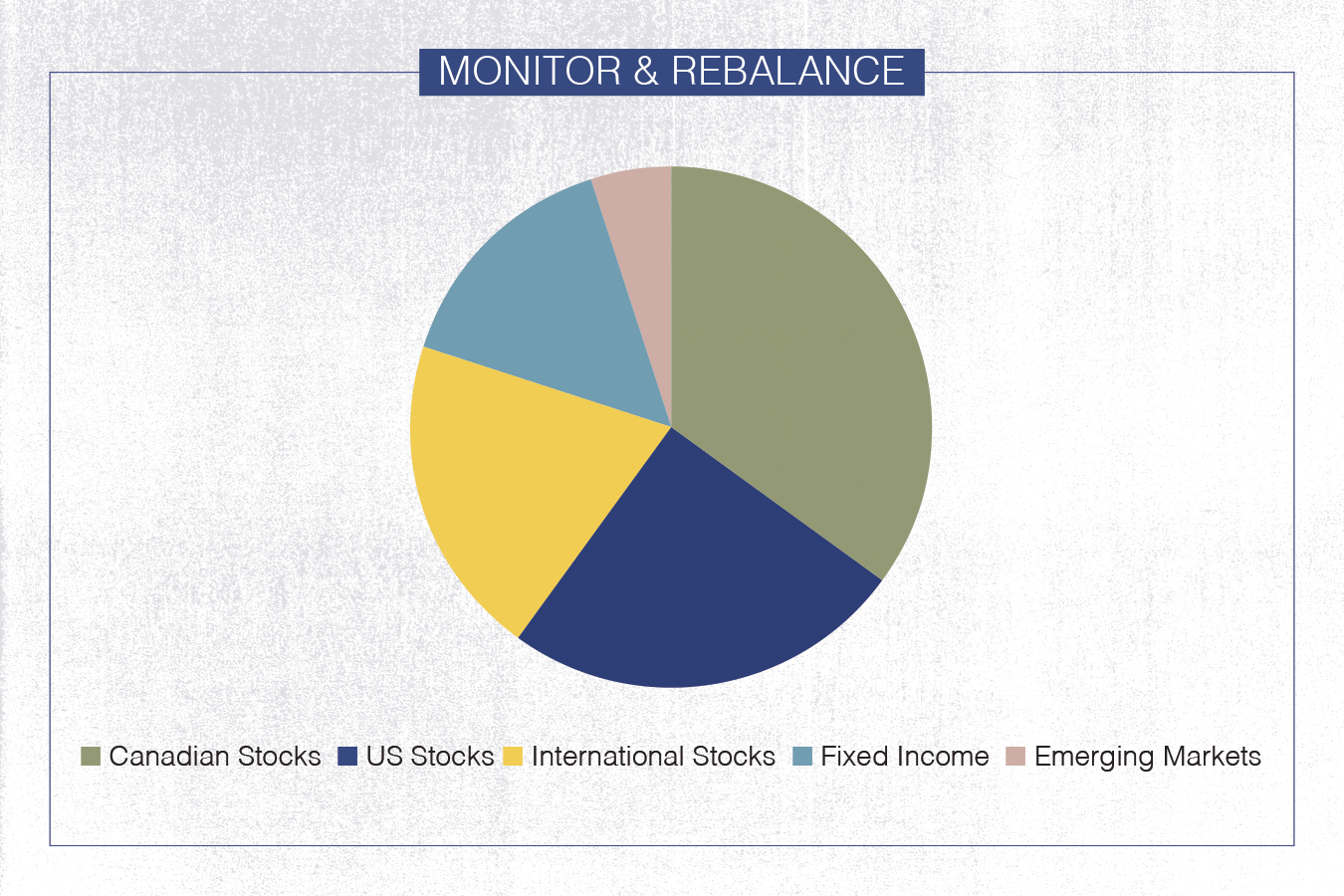Simple Principles for Successful Investing
Published on May 3, 2019
minute read
Share:
Not sure how to invest in the current market? Or any market for that matter? You're not alone. There's no crystal ball for investors, but there are a few guidelines that can help you navigate the financial markets.
The most effective investment strategies revolve around a few simple proven principles that are easy to follow and repeatable. Here are three to consider:

1. Diversification
A staple strategy that many investors choose is diversification. When one investment category is underperforming, another one might be outperforming. Having your money in different types of investments helps you ride out market fluctuations and stay focused on the long term.
When choosing how to diversify, start with your investor profile. This will help you identify the right mix of investments for your portfolio. For example, a portfolio may hold a mix of the following basic asset classes:
- Fixed-income investments (such as bonds and certain GICs) generate cash flow and can provide stability to help protect your portfolio from volatility.
- Equities (stocks) provide the greatest potential for long-term growth and protection against inflation.
- Cash and cash equivalent investments provide a stable base for your portfolio. They also offer liquidity, meaning that you can access your money easily and on short notice.
2. Consider dollar-cost averaging
Dollar-cost averaging involves buying a fixed dollar amount of a particular investment on a regular schedule.
Like the proverbial death and taxes, you can count on financial markets going up and down. When prices are high, your fixed dollar amount would buy less of an investment. But when prices are low, your money buys more. Dollar-cost averaging helps to even out the effect of volatility, and it may reduce your average cost per share or unit.
This strategy takes the uncertainty out of deciding when to buy. Making regular, automatic contributions is another way to stay disciplined about saving and investing.
3. Monitor and rebalance as needed
When market movements cause your asset allocation (the mix of investments you developed based on your investor profile) to stray from your target, it could be time to revisit your plan. The outperformance or underperformance of certain asset classes or specific holdings could expose you to more risk than you're comfortable with, or move you away from your investment objective. Monitoring and rebalancing the mix of cash, fixed income and equities in your portfolio can go a long way toward successful investing.
How do you rebalance your assets? Simple! Use the Portfolio Analyzer tool, found under Monitor > Portfolio Goals, to easily view your portfolio's mix of investments and monitor risk.
Many investors rebalance annually, or as needed.

Here are some tips and tools to consider:
- Review your current asset mix to determine how your investments are diversified. (For convenience, you can group your accounts on your Holdings page.)
- Use the Portfolio Analyzer tool to view your portfolio's mix of investments and monitor risk.
- Execute your rebalancing ideas or save a trades list for later.
- For investment ideas, use stock screeners or check out the Investor's Toolkit resources found under Research.

RBC Direct Investing Inc. and Royal Bank of Canada are separate corporate entities which are affiliated. RBC Direct Investing Inc. is a wholly owned subsidiary of Royal Bank of Canada and is a Member of the Investment Industry Regulatory Organization of Canada and the Canadian Investor Protection Fund. Royal Bank of Canada and certain of its issuers are related to RBC Direct Investing Inc. RBC Direct Investing Inc. does not provide investment advice or recommendations regarding the purchase or sale of any securities. Investors are responsible for their own investment decisions. RBC Direct Investing is a business name used by RBC Direct Investing Inc. ® / ™ Trademark(s) of Royal Bank of Canada. RBC and Royal Bank are registered trademarks of Royal Bank of Canada. Used under licence. © Royal Bank of Canada 2019. All rights reserved.
The views and opinions expressed in this publication are for your general interest and do not necessarily reflect the views and opinions of RBC Direct Investing. Furthermore, the products, services and securities referred to in this publication are only available in Canada and other jurisdictions where they may be legally offered for sale. If you are not currently resident of Canada, you should not access the information available on the RBC Direct Investing website.
Inspired Investor brings you personal stories, timely information and expert insights to empower your investment decisions. Visit About Us to find out more.










